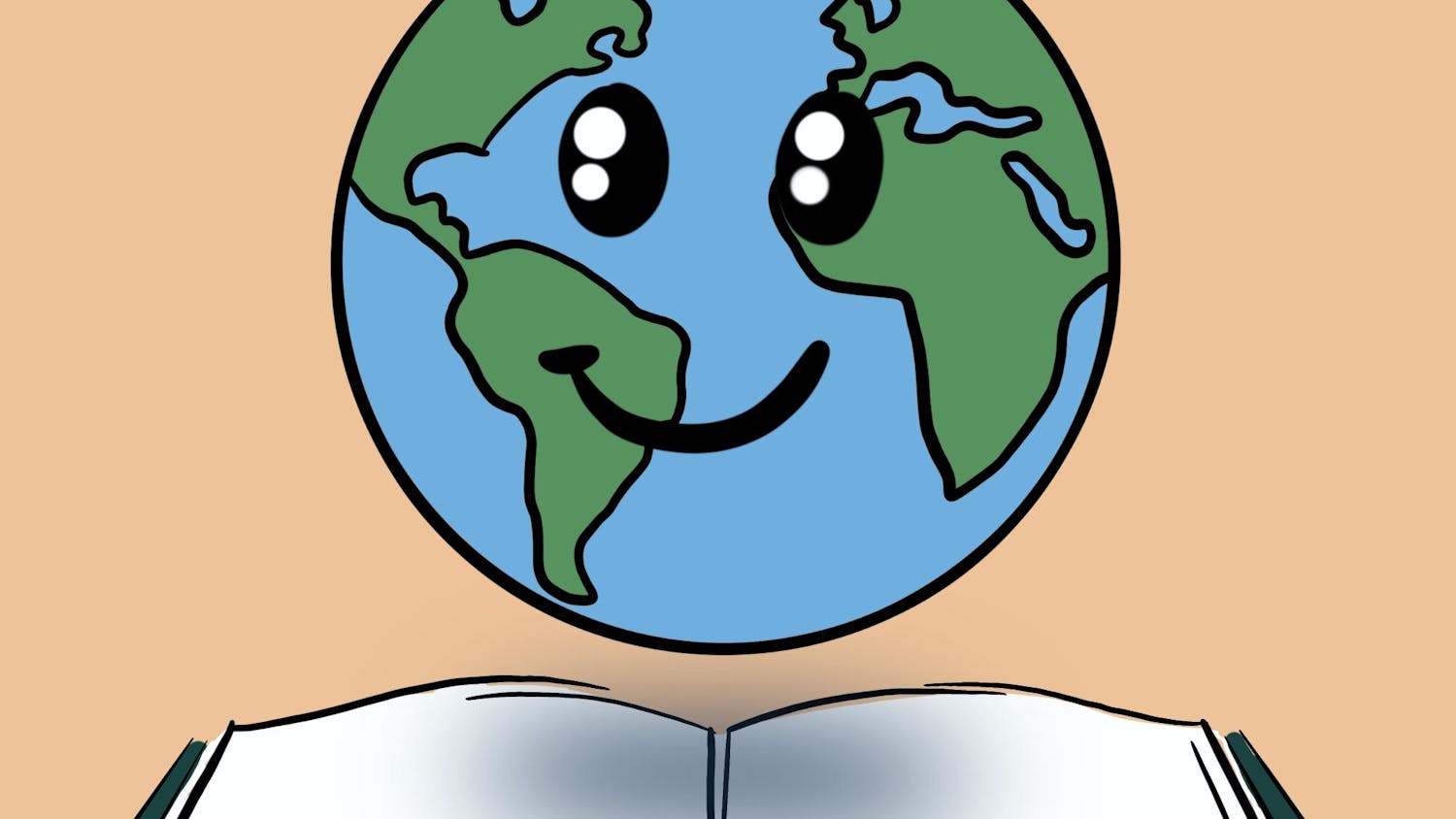The Rhode Island School of Design's theater group, the Exhibitionists, played the avant-garde card last weekend, holding their production of "The Shape of Things" — a Neil LaBute play about art, relationships and relationships as art — in no place other than an art museum. Director Alex Lee '14, a Brown-RISD dual degree student, staged the show in the quirky RISD museum Friday and the dignified Fleet Library Saturday. Fitting locations, along with a script that starts off hackneyed but grows witty and original as it progresses, provided promising raw material.
But a formless sculpture made of crystals is not a masterpiece. While the subject matter — philosophy of art, morality, our society's obsession with physical perfection — was highly relevant, the acting did not do justice to these lofty topics.
In the play, Adam (Nick Truss) meets an art student named Evelyn (Kathleen Ottinger) — the religious allegory becomes more blatant when Adam periodically explains away a nose job by saying he "fell" on his face — in a museum where he works. After seducing him, Evelyn turns Adam into a project of sorts. She convinces him to diet, exercise, purchase contact lenses, get cosmetic surgery and abandon his only two friends, yet she retains his undying affections all the while.
The stage expands into the audience for Evelyn's presentation of her final art project — then comes the twist: Adam is her project, a sculpture of "the human flesh and the human will." Rather than forcing him to do anything against his will, she did, in fact, sculpt it. He wanted, albeit on her suggestion, to improve his appearance and lifestyle. Still, before Evelyn entered the scene, he was happy the way he was. Like her biblical counterpart, Evelyn curses Adam with an inescapable self-consciousness that both motivates and constrains. So were the self-improvements resulting from Adam's awareness — or illusion — of his flaws truly of his own volition?
The implications of this philosophical dilemma are grave, and once drawn into the play, audience members can't help but question to what extent they are sculptures of their own culture and its trends. Evelyn defends her deception by pointing out that Adam has become what the mainstream media would consider "more interesting, more desirable, more normal."
Evelyn assumes the position of Dr. Frankenstein — crossing moral boundaries with art as Frankenstein does with science — provoking the question of whether art must be moral to be good. Except, rather than patching together bits of dead bodies, she must persuade a live person to undergo the transformations she has in mind. To accomplish this feat, one must be charismatic, though perhaps as cold-hearted as Frankenstein's monster. But Ottinger's Evelyn seemed too brash, too neurotic, too controlling to win over the love — let alone the obedience — of her creation, rendering her success in doing so unconvincing.
Perhaps her strident performance, partially accounted for by her character's attributes, was also a result of the Fleet Library's acoustics: Most of every character's lines were either shouted or inaudible. The interactions between Adam and Evelyn felt forced, partly because it was impossible to understand what he saw in her, and partly because they were thinking about, rather than as, their characters. Their movements read as stage directions, rather than as organically generated expressions of internal states.
Still, the minimalist set under the RISD library's giant hanging clock, and the melding of the real and play worlds as the audience witnesses Evelyn's presentation as both viewers and characters, held my attention long enough to make me examine the play's thematic content. I would advise anyone who didn't get around to seeing the play to read it — especially if you have ever wondered to what extent we act on our culture and to what extent it acts on us.
* *
(Two out of five stars)




